We checked out of Crown Guest House, and said goodbye to the landlady, who we'd grown to like. We flagged down a taxi to take us the 10km to the Mo Chit (Northern and North Eastern) bus terminal. We’d given ourselves an hour to get there. It took an hour, due to the bad traffic. We purchased some sugary waffles, sugary coffee and water, found our bus and climbed aboard. It wasn’t bad; with seats that reclined, air fans and a toilet "for making pee". We set off ten minutes late, and were promptly given a coffee in a can, a slice of cake and a fruit juice box. It was an alright start to the day, even if we were super tired.
We alternated between napping, planning and reading
. After two hours, we had a ten minute toilet stop, where we bought loads of delicious fruit. Later, a man came around on the bus and offered to sort people’s Cambodian visas for them – for US$40 a head. This was a scam. There were many scams relating to Cambodian visas, and most involved a heavy mark up. We declined his offer. We’d read that the Cambodian visa charge was actually US$20, so were much more prepared to pay that than US$40 each.
Four and a half hours after leaving Bangkok, we arrived at Aranyaprathet, where the bus stopped for a while. It transpired that this was so chappy could go and get the visas sorted, but we weren’t told this or any other information. In the meantime, another chap came around with crab rice for everyone. Obviously we declined this and asked about vegetarian food. Unfortunately, it was crab or nothing, and there wasn’t even time for us to hop off the bus and buy anything as we were shortly underway again. A fellow traveller who was sitting behind us (we think he was Thai), had heard our discourse with the bus chap and took pity on us, offering us a bag of crisps that he said were vegetarian
. What a nice chap! We politely declined, as we already had some emergency snack food in case of such occurrences.
We reached the border at 2pm, and were told the bus would be leaving at 3pm. We reconfirmed that we had to go through the visa rigmarole with the chap from the bus. We’d read that each queue could take 2 hours, so only being given an hour was a bit of a worry. Also we’d been told that the bus wouldn’t leave without us. Chappy was unrepentant, and repeated that the bus would leave at 3pm.
We hurried off to get our exit stamp out of Thailand, which also involved being photographed. Next was the Cambodian visa office, where we quickly filled out a form, dug out a passport sized photograph, and realised that the visa fee had gone up to US$30 each. When we went to the window to get our visa, we were informed that there was also a 100 Thai baht charge (aka a bribe, about £2) each. We could have argued about this, but as time was pressing, had little choice but to pay
. Our passports were taken off into a back office somewhere, and when they were returned to us a few minutes later, we realised that Jayna’s name was spelt incorrectly on the full page visa sticker. Immediately, we went back to the window to get this corrected. An official told Jayna that he could 'guarantee’ it wouldn’t cause a problem. Jayna insisted that it be corrected anyway. A few minutes later, the passport was returned with a fairly obvious pen correction on it. We hurried away to join the next queue. This was to get the stamps on the visa. We filled out another form, and when we reached the front, we were photographed and stamps were liberally applied. This included one stamp across two pages for Ken’s passport, and a total of 13 stamps applied to our documentation.
We made it back to the bus before many other people, despite most others having used the more expensive scam visa. In the end, the cost difference wasn’t that much, but we were still glad to have done the Cambodian visa process ourselves. Particularly as some people who had done the scam visa seemed to be having problems with theirs.
The landscape didn’t change into Cambodia, but the bus changed the side of the road on which it drove. It was another two and a half hours to reach our destination, Siem Reap, and we were dropped off at the bus office, not the bus station. A bus company spokesman said that the company had arranged for free transport for us to our hotels
. We twigged immediately that this was most likely to be a way for drivers to get business for the main draw of the area, Angkor Wat. We weren’t wrong. We considered walking the kilometre to our hotel, but felt lazy after a day of not doing anything. Our remorque (a motorbike with a trailer with seats) driver did indeed give us the hard sell for Angkor Wat. After lots of discussion, and some hard negotiation, we settled on a price with him for two days of transport to Angkor Wat. He wasn’t very happy about us not paying him upfront, us negotiating so hard, or us wanting to do sunrise at Angkor Wat. We were not going to be ripped off, despite his pleas that his ‘baby was going to die’ if he didn’t take home money that day. Exaggeration much?!
As mentioned above, Angkor Wat and the huge number of temples in the area was the main draw for us. Our love of old buildings and stuff had not diminished, and we were excited to spend a couple of days taking in the Angkor sights
.
We checked into our hotel and were a little disappointed. Noone seemed to know how the shower worked, and it took a while to get that sorted out. The shower was hot but was sited over the sink, making it rather difficult to actually get wet. The sink leaked, so at least our feet got wet, even when we didn’t want them to. The internet was terrible, as appeared to be standard for Asia. The room was also quite bug filled, though we never worked out where the bugs were coming from. The room, however, was spacious, and it was situated near an area called Pub Street in Siem Reap. Pub Street had pubs, surprise surprise, and nearby streets had eateries and even small pedestrianised sections. After checking in and settling in, we rued the lack of pavements as we wound our way through the traffic to a road near Pub Street for some high quality vegetarian food, our first meal of the day. We got some cash sorted out as well, as Siem Reap appears to run on US dollars and not Cambodian riels, and retired for the evening
. It had been a long day, and we had an early start the following day.
On Wednesday 2nd, we were picked up by our remorque driver, Dara, at 5am for the trip to see sunrise over Angkor Wat. We were doing what was called the Little Circuit. We drove a few kilometres north, and purchased our three day passes for entry. We carried on north a little further, and were dropped off opposite an entrance to Angkor Wat. It was still very dark at this time, so we couldn’t appreciate the detail on the outside of the building complex, which was situated behind a huge moat. We worked our way inside, following the crowds to reach the typical sunrise viewing point, beside a pond so we got both sunrise and reflections of Angkor Wat in the water. It was very busy, and we jostled for position near a spot by the water’s edge. It became lighter and the sky did go a little pink, followed by golden yellow and orange, all the while with reflections of the sky and silhouette in the still water before us
. The sunrise itself wasn’t spectacular, but that was more than made up for by Angkor Wat’s stunning outline and the images in the pond. After coffee, we ventured in.
Angkor Wat was as you might imagine – huge, absolutely full of carvings, and with passages leading all over the place. And old, built in the 12th century. It is apparently the world’s largest religious building, and one of our first sights after entering was a Buddha statue. We climbed up some stairs to take in the central courtyard. A Buddhist temple on the top of the complex was shut when we were there, as we were too early. We wandered around the rest of the area, merrily taking lots of pictures and dodging the sun, until Jayna’s camera’s memory card stopped working. (Don’t buy memory cards in Nepal, as they are dodgy.) After some re-jiggulation of memory cards, the temple had opened so we went up to see what the deal was. The queue was already backed up to a marker which suggested the line would take 45 minutes to reach the front, and we were pretty sure that Jayna would not be allowed in due to the dress rules (she was wearing shorts – not allowed for women). So we decided against going to the temple, and wandered down to the front of Angkor Wat to take in the bas-reliefs. On the outside of the temple were about 800 metres of carvings, depicting epic battle scenes.
We were late for our remorque driver by this point, but hadn’t yet had breakfast
. On the way out of the temple, we stopped to look at the monkeys which had suddenly appeared, before heading to the eateries. We stopped into an expensive food place, and had the worst breakfast of grease with some more grease, when it was meant to be egg and potato. The coffee was alright though.
Our next stop was Angkor Thom, for the Bayon temple. Angkor Thom was another walled off area, surrounded by a moat, with four gates to the north, south, east and west. It was also huge. Bayon temple was in the middle of Angkor Thom, and is well known for its large number of faces (216 to be precise), representing Avalokiteshvara. We entered Angkor Thom via the south gate, an imposing structure, and headed for Bayon. Our first view was of elephants taking people for a ride around the outside of the temple area, followed by the spectacular faces looking out into the jungle. We had a peek at the carvings on the outside, and went in, climbed up, and dodged the crowds for a while by finding ourselves a secluded spot, where we could really take in the temple. The faces were everywhere; the more we looked, the more we saw. It was very beautiful and slightly creepy.
Next, we walked to Baphuon temple, where Jayna was denied access due to her shorts. So we kept walking to Phimeanakas temple. This was smaller, with no access allowed to anyone. We took in the Sras Srei pool next to it, and headed on to the next temple, which was a modern one with a large Buddha inside
. After getting a nice refreshing drink from one of the vendors, we took in the Preah Pithu temples T, U, V, X, and Y, wandering between them. They were mostly ruined and small, but atmospheric and quiet in the midst of the jungle.
We walked back towards Bayon via the Terrace of the Leper King, and the Terrace of the Elephants. These formed a long walkway and it was absolutely baking in the sun. We enjoyed a wander around the lower level of the Terrace of the Leper King, including lots more carvings and some beautiful Nagas (many headed snake carving). The Terrace of the Elephants was lined with elephants, unsurprisingly, and a Buddha on the top. When we got back to Bayon, we found Dara driving around looking for us. Apparently we were being slow and he wanted lunch.
We headed off to the next temple, Ta Prohm, better known as the temple featured in Tomb Raider starring Angelina Jolie. This temple is famous for its fig, banyan and kapok trees root systems, covering the temple and forming a canopy. We loosely followed a suggested route around the large complex, taking in the roots as they entwined the buildings and drove apart the stones. It was a very impressive sight.
When we left Ta Prohm, we headed towards the place where we were told we would find the remorque. On the way we picked up a little Cambodian girl who was hell bent on selling us some small trinkets
. While there were a lot of people in and around Angkor peddling their wares, this was the first place where we had been set upon by children. As the first little girl haggled away with herself, a small crowd of them began to cluster until Dara materialised and we were on our way.
After another ride on the remorque, we were at our final temple of the day, Banteay Kdei. This was smaller and much more peaceful than the others. With its bending walls, fallen stones and low towers, it was a calmer setting for the end of a busy day. On the way out we walked past a band of Khmer playing instruments beside the path. We realised that many of the band members were missing limbs. There was a sign in front of the band saying that there were survivors of land mine explosions who had decided to form a band instead of beg on the street. We were touched by this and donated some money. It would soon become apparent that this was not the only such band in the Angkor/ Siem Reap area, such was the tragic abundance of unexploded land mines in Cambodia.
Before locating our remorque, we headed across the road for a view over Srah Srang, the royal bathing pond, at the time home to several bathing children. It looked like a good idea, as the day was still baking hot.
It had been a fantastic yet tiring day! The heat, the early start and not much sleep the night before, combined with plenty of walking, left us pretty tired
. We got back to our hotel at 3.15pm. Ken napped for a while, before we headed out to have dinner at the vegetarian restaurant near Pub Street. Too tired for much else, we headed back for an early night and prepared ourselves to return to Angkor Wat the following day.
On Thursday 3rd, we woke up less early, had a greasy breakfast, and were picked up by Dara. We were heading back into the Angkor Wat area to do what is known as the Grand Circuit, to see some more temples.
Our first stop was Preah Khan temple, which was one of those temples which was deceptively long. We wound our way through the passageways, taking in the carvings, until we reached the Buddhist stupa in the temple. Here, a police officer took Jayna’s camera, told us how to pose, and took a couple of snaps. He then ‘requested’ a ‘donation’. When we gave him one, he asked for more. We respectfully declined – this was a police man after all – and went away from him as quickly as possible
. There were a couple of figs or banyans which had made their way over the temple, plus a seemingly separate columned building. On our way back through, we noted just how many police men were by the stupa, and wondered at how much money they must make off unsuspecting tourists.
Our second stop of the day was at Neak Pean, a water temple. So called because it was set in a large body of water, crossed by a lengthy, and slightly rickety, wooden walkway. We crossed the walkway and took in the apparently dead trees on either side, presumably casualties of the wet season. The temple itself was small, surrounded by water, and framed in a square shape. It was very peaceful and very different to the other temples. Dodging into the shade wherever we could, we made our way to our third stop.
The next stop was at a temple called Prasat Ta Som, a smaller temple, filled with the usual atmospheric charm. At the far end, one of the gates was covered with the spectacular roots of a fig or banyan tree
. We took some photos before heading off to our fourth stop of the day, a temple called Mebon. Mebon was older than Angkor Wat, dating from the 10th century. It didn’t have carvings, but did have statues dotted around. It looked a bit like a miniature Angkor Wat, with towers looming overhead. Some of these we were able to go inside. In one we found a Buddha statue, but mostly they were empty, with holes at the very top letting in just a little bit of light.
Our fifth and final stop of the day was to a temple called Pre Rup. This was similar in style to Mebon; older, with Angkor-esque towers, though it had some carvings to admire. It had higher platforms, with huge steps leading up to the top level. We were happy to climb up and see the surroundings, where we could see trees, trees and some more trees. We had a great time wandering around, yet were happy to climb into the remorque to head back into town. It was excessively hot again and we were looking forward to some air conditioning time in the hotel
.
Before Dara dropped us off, we discussed and agreed to another day’s remorque driving, to take us out to some of the more remote sites. As we would be travelling quite far, this was more expensive and we negotiated less hard. We had planned to go to the Angkor National Museum the following day as well, but now realised that we would not have time. The only way to fit it in would be to do it that afternoon, so our plans of relaxing in the air conditioning were scuppered!
After preparing more water, we headed out to buy our onward bus ticket travel from a bus company on one of the main streets in Siem Reap. First we had to find the office, so started at one end of the road and progressed north, which was also in the direction of the Angkor National Museum. We found the bus company and bought our tickets. By this time, we were already half way to the museum, so carried on walking the rest of the way. We arrived, hot and sweaty, to be told that there was no water, bags or cameras allowed inside
. We downed some liquids, put our bag into the cloakroom, paid an expensive entrance fee, and headed in. There were several exhibits on two levels, which were just the right length so we didn’t get bored or museum-ed out. The exhibits covered topics such as the kings of Angkor, background to Angkor Wat and Bayon, explanations of Hindu deities, a room of a thousand Buddhas, writing in Sanskrit, the origins of Cambodia as a country, and the different types of dress worn. It was chock full of information, statues and videos. Unfortunately, we only had 90 minutes in the museum before it closed, which wasn’t long enough to take it all in. We enjoyed what we saw, even if it was more rushed than we would have liked.
The Angkor National Museum was near another vegetarian restaurant. On the day that we found out the UK is going to war, again, we headed to the Peace Café for our evening meal. This was a lovely setting, full of trees and plants, with yoga upstairs and community projects being run for the benefit of everyone
. Young people were in charge of the restaurant and we had a great meal. We flagged down a remorque to take us back to our hotel after a long, hot day, and prepared ourselves for another the following day.
On Friday 4th, Dara didn’t show up. Instead, he sent his ‘brother’, Victor. We figured that Dara had managed to get some more lucrative business, and had sold us to one of his mates. We were suspicious as we didn’t know who this chap was, however, after some questioning, he knew the route, stops and price for our journey. We also spoke to Dara on the phone, so we went with Victor, who turned out to be very nice.
Our first stop was the Kbal Spean waterfall, about 50 kilometres from Siem Reap. To get there, we passed back through the Angkor complex, passing Angkor Wat, Bayon temple and others along the way. After leaving that immediate area, we passed by some villages, gorgeous green fields and lush vegetation, making the journey very pretty
. It took a long time to reach the waterfall. From the car park, it was a 1500 metre walk, helpfully marked every 100 metres by boards. The path was more like climbing over boulders and uneven ground than an actual path, and so it was actually quite difficult in the heat. The waterfall was worth it though. When we reached the end of the path, we found the stream, and here was what we had come for – river bed carvings. We’d read that it was filled with lingas and yonis (phallic symbols), and found various carvings along that theme. The stream bed was rightly roped off, and the water was an unappetising brown colour. The sediment in the stream, the colour of the water, combined with the leaves from the trees and a lack of maintenance of the site, meant that quite a lot of the carvings were obscured from view. We were disappointed by this, but enjoyed what we could see – a four headed Brahma figure, an ox pulling a cart, and the rest.
Though there were no signposts, we figured there must be more, as we’d read about a waterfall. We headed upstream to find ‘no entry’ signs, so headed downstream. Here, there were indeed more carvings, on the riverbed and surrounding rocks. These included a crocodile, a man looking relaxed in a pool of water, plenty of figures and plenty of lingas and yonis. We kept going until we reached the waterfall, which was small, and found no more carvings. It was time to head back to our remorque so we did just that, accompanied by a friendly dog who came with us about half of the way until the edge of his territory
.
We found Victor and headed off to our next stop, Banteay Srei temple. A few kilometres down the road, this was a small temple with substantial and well preserved carvings, renowned as the best carvings in the Angkor Wat complex. Heading in, we bought a mango which was delicious and refreshing, and were surprised by just how small the temple was in comparison to the others. There was also no access into or between the buildings, unlike the majority of the rest of the temples. The carvings were indeed exquisite, and it was hard to believe that sandstone carvings, which were about 900 years old, had lasted quite so well.
We headed off for our third and final stop of the day; sunset at Phnom Bakheng temple. We’d read that this was popular and indeed it was. The crowds were pouring into the entrance to the hill, to climb up to the temple, and unfortunately Jayna was stopped because she was wearing shorts. We went to find Victor, to see if we could go elsewhere for sunset, but couldn’t find him
. Without a back up plan, we resorted to buying some of the ubiquitous elephant patterned trousers. They weren’t what Jayna wanted, and they were pretty rubbish and uncomfortable, but they did the trick and we were allowed to climb the hillside. Along with hundreds of other people. When we reached the top, there was a sizeable queue which we joined. This was to go to the top of the temple, to watch sunset. Only 300 people were allowed up at any one time, and it was already busy. The queue moved slowly, and we missed sunset. After sunset, a whole crowd of people poured down from the top, which meant we could go up and see the pink clouds and take in the surroundings as it got dark. We only had about ten minutes there before being told to leave, as the temple was closing. From the top, we could just about make out the towers of Angkor Wat, but no more of the temples dotted around. We didn’t even have time to appreciate the temple of Phnom Bakheng itself, despite standing outside of it for an hour. We reckon if it wasn’t for the shorts palaver, we would have made it to the top for sunset. Drat.
On the way back into Siem Reap, we saw our first Christmas tree of the season. Victor dropped us off at the Peace Café for another delicious meal, and we took another remorque back to our hotel. We were pretty exhausted from all the nice temples we’d seen over the previous few days, but forced ourselves to get organised, packed and ready for the early start the following morning.
Next stop – Battambang!
Angkor Wat and Siem Reap
Wednesday, December 02, 2015
 Siem Reap, Siem Reap, Cambodia
Siem Reap, Siem Reap, Cambodia
Other Entries
-
75Hiroshima and Miyajima
Oct 0756 days prior Hiroshima, Japanphoto_camera40videocam 0comment 0
Hiroshima, Japanphoto_camera40videocam 0comment 0 -
76OK Okayama
Oct 0954 days prior Okayama, Japanphoto_camera14videocam 0comment 0
Okayama, Japanphoto_camera14videocam 0comment 0 -
77Back to Osaka
Oct 1152 days prior Osaka, Japanphoto_camera0videocam 0comment 0
Osaka, Japanphoto_camera0videocam 0comment 0 -
78China, China and China in transit
Oct 1251 days prior Beijing, Chinaphoto_camera4videocam 0comment 0
Beijing, Chinaphoto_camera4videocam 0comment 0 -
79Crazy Kathmandu
Oct 1350 days prior Kathmandu, Nepalphoto_camera1videocam 0comment 0
Kathmandu, Nepalphoto_camera1videocam 0comment 0 -
80Tranquil Pokhara
Oct 1548 days prior Pokhara, Nepalphoto_camera2videocam 0comment 0
Pokhara, Nepalphoto_camera2videocam 0comment 0 -
81Trekking in the Himalayas
Oct 1746 days prior Jomsom, Nepalphoto_camera129videocam 0comment 0
Jomsom, Nepalphoto_camera129videocam 0comment 0 -
82Back to Pokhara
Oct 2538 days prior Pokhara, Nepalphoto_camera7videocam 0comment 0
Pokhara, Nepalphoto_camera7videocam 0comment 0 -
83Chitwan National Park and elephant riding!
Oct 2637 days prior Sauraha, Nepalphoto_camera70videocam 0comment 0
Sauraha, Nepalphoto_camera70videocam 0comment 0 -
84Back to Kathmandu
Oct 3033 days prior Kathmandu, Nepalphoto_camera59videocam 0comment 0
Kathmandu, Nepalphoto_camera59videocam 0comment 0 -
85Delhi: Never again
Nov 0230 days prior Delhi, Indiaphoto_camera26videocam 0comment 0
Delhi, Indiaphoto_camera26videocam 0comment 0 -
86Agra and the Taj Mahal
Nov 0527 days prior Agra, Indiaphoto_camera34videocam 0comment 0
Agra, Indiaphoto_camera34videocam 0comment 0 -
87Jaipur and the Amber Fort
Nov 0725 days prior Jaipur, Indiaphoto_camera30videocam 0comment 0
Jaipur, Indiaphoto_camera30videocam 0comment 0 -
88Candolim all inclusive
Nov 1022 days prior Candolim, Indiaphoto_camera45videocam 0comment 0
Candolim, Indiaphoto_camera45videocam 0comment 0 -
89Palolem and idyllic Patnam
Nov 2210 days prior Palolem, Indiaphoto_camera16videocam 0comment 0
Palolem, Indiaphoto_camera16videocam 0comment 0 -
90Kolkata - final stop in India (hooray!)
Nov 257 days prior Kolkata (Calcutta), Indiaphoto_camera5videocam 0comment 0
Kolkata (Calcutta), Indiaphoto_camera5videocam 0comment 0 -
91Banging Bangkok
Nov 275 days prior Bangkok, Thailandphoto_camera50videocam 0comment 0
Bangkok, Thailandphoto_camera50videocam 0comment 0 -
92Angkor Wat and Siem Reap
Dec 02 Siem Reap, Cambodiaphoto_camera135videocam 0comment 0
Siem Reap, Cambodiaphoto_camera135videocam 0comment 0 -
93Battambang and the bamboo train
Dec 053 days later Battambang, Cambodiaphoto_camera29videocam 0comment 0
Battambang, Cambodiaphoto_camera29videocam 0comment 0 -
94Phnom Penh and Cambodia's tragic history
Dec 075 days later Phnom Penh, Cambodiaphoto_camera45videocam 0comment 0
Phnom Penh, Cambodiaphoto_camera45videocam 0comment 0 -
95Kratie river dolphins
Dec 108 days later Kratie (Kracheh), Cambodiaphoto_camera26videocam 0comment 0
Kratie (Kracheh), Cambodiaphoto_camera26videocam 0comment 0 -
96Back to Phnom Penh
Dec 1210 days later Phnom Penh, Cambodiaphoto_camera0videocam 0comment 0
Phnom Penh, Cambodiaphoto_camera0videocam 0comment 0 -
97What can Koh Rong, will Koh Rong
Dec 1311 days later Koh Rong, Cambodiaphoto_camera31videocam 0comment 0
Koh Rong, Cambodiaphoto_camera31videocam 0comment 0 -
98Sihanoukville, final stop in Cambodia
Dec 1614 days later Sihanoukville, Cambodiaphoto_camera4videocam 0comment 0
Sihanoukville, Cambodiaphoto_camera4videocam 0comment 0 -
99Back to Bangkok
Dec 1715 days later Bangkok, Thailandphoto_camera0videocam 0comment 0
Bangkok, Thailandphoto_camera0videocam 0comment 0 -
100Koh Phangan for Thai island time
Dec 1816 days later Koh Phangan, Thailandphoto_camera23videocam 0comment 0
Koh Phangan, Thailandphoto_camera23videocam 0comment 0 -
101A Khao Lak Christmas
Dec 2321 days later Khao Lak, Thailandphoto_camera81videocam 0comment 0
Khao Lak, Thailandphoto_camera81videocam 0comment 0 -
102... and a Mandalay New Year!
Dec 3129 days later Mandalay, Myanmarphoto_camera52videocam 0comment 0
Mandalay, Myanmarphoto_camera52videocam 0comment 0 -
103The endless temples of Bagan
Jan 0332 days later Bagan, Myanmarphoto_camera125videocam 0comment 2
Bagan, Myanmarphoto_camera125videocam 0comment 2 -
104Multicultural Yangon
Jan 0837 days later Yangon (Rangoon), Myanmarphoto_camera40videocam 0comment 0
Yangon (Rangoon), Myanmarphoto_camera40videocam 0comment 0 -
105Lake Inle life
Jan 1140 days later Nyaungshwe, Myanmarphoto_camera53videocam 0comment 0
Nyaungshwe, Myanmarphoto_camera53videocam 0comment 0 -
106Trekking to Kalaw
Jan 1443 days later Kalaw, Myanmarphoto_camera78videocam 0comment 0
Kalaw, Myanmarphoto_camera78videocam 0comment 0 -
107Back to Mandalay
Jan 1746 days later Mandalay, Myanmarphoto_camera1videocam 0comment 0
Mandalay, Myanmarphoto_camera1videocam 0comment 0 -
108Back to Bangkok, again
Jan 1847 days later Bangkok, Thailandphoto_camera52videocam 0comment 0
Bangkok, Thailandphoto_camera52videocam 0comment 0 -
109Relaxing in Chiang Mai
Jan 2049 days later Chiang Mai, Thailandphoto_camera33videocam 0comment 0
Chiang Mai, Thailandphoto_camera33videocam 0comment 0 -
110Huay Xai, gateway to Laos
Jan 2352 days later Huay Xai, Laosphoto_camera12videocam 0comment 0
Huay Xai, Laosphoto_camera12videocam 0comment 0

 Siem Reap, Siem Reap, Cambodia
Siem Reap, Siem Reap, Cambodia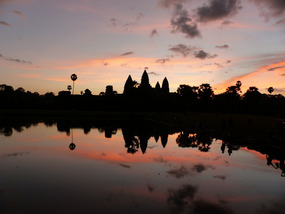
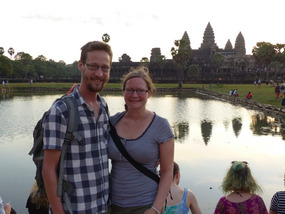
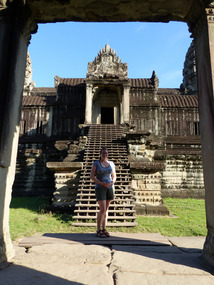
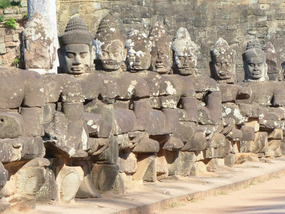
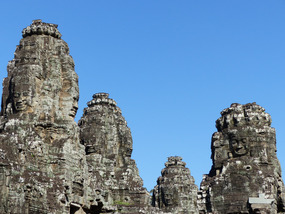

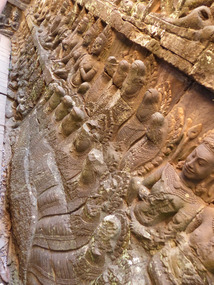
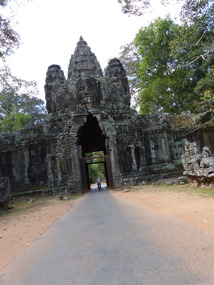
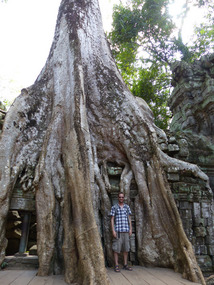

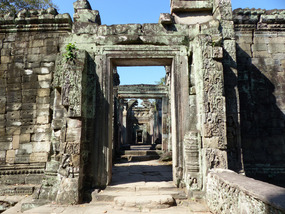
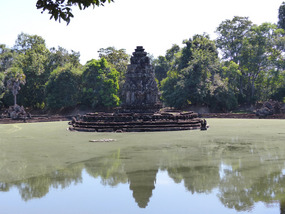
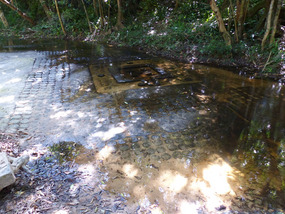
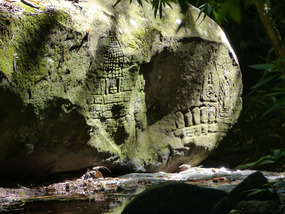
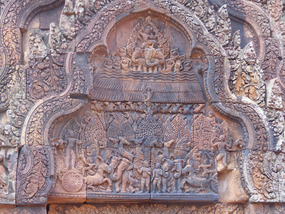

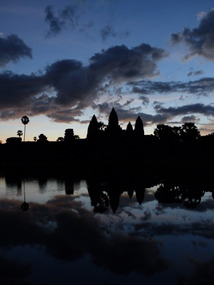
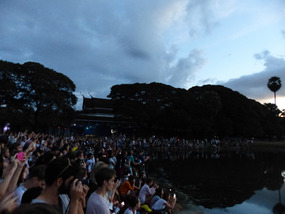
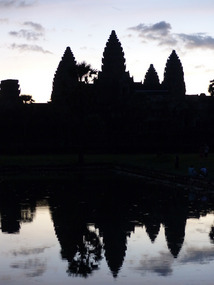









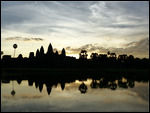

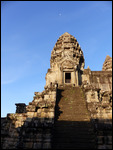
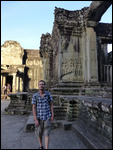
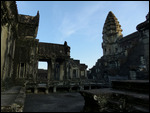
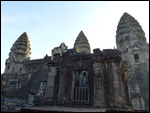
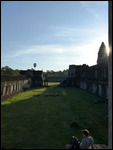
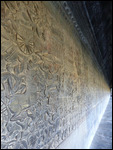
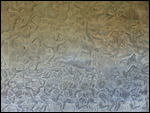

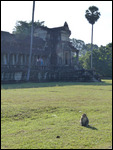

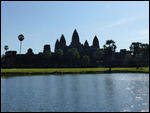
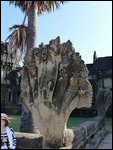
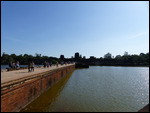
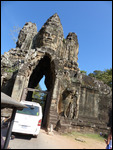
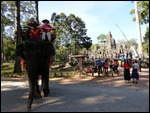
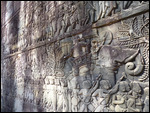
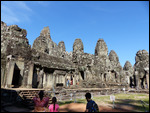
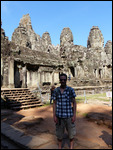
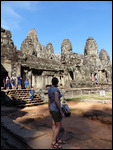
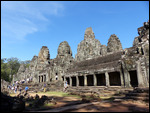
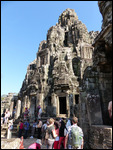
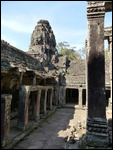
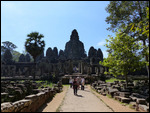
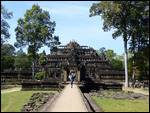
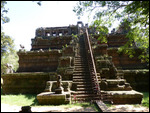

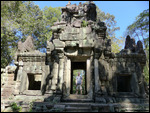
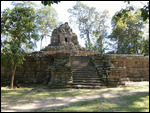
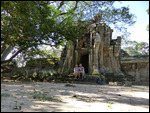
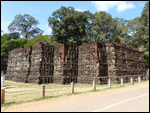
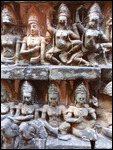
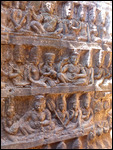
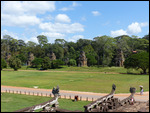
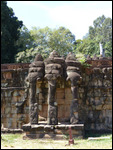

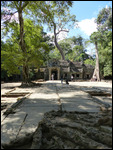
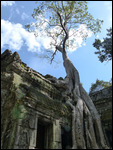
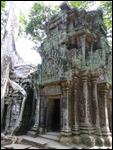
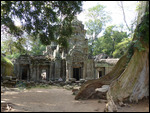
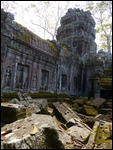

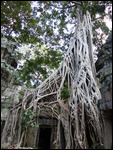
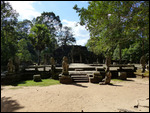
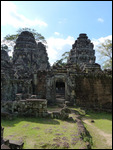
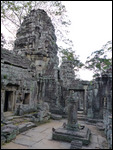
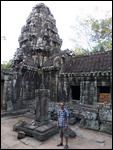
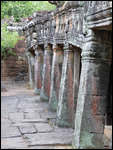

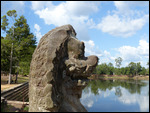
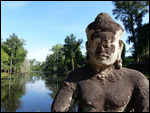

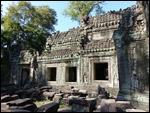
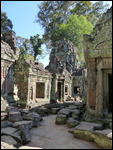
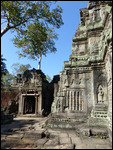
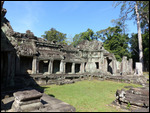
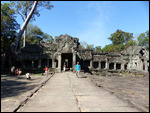

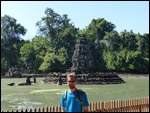
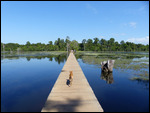
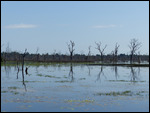

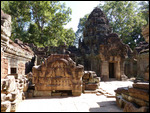
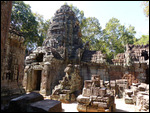
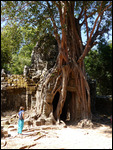
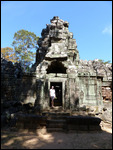


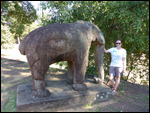
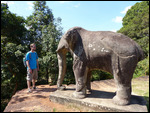
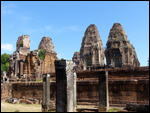
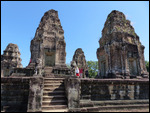
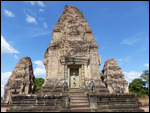
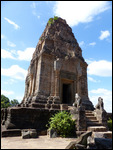
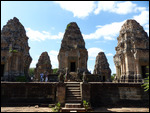
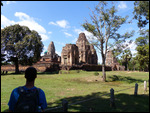
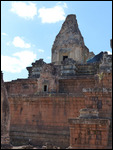
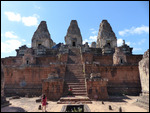
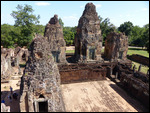
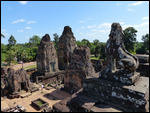
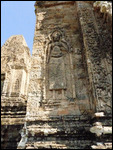

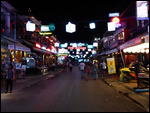
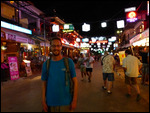
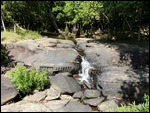
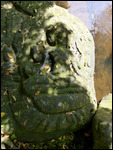

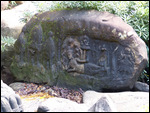
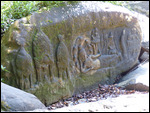
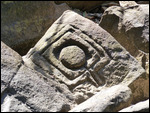
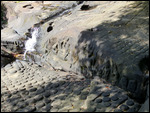
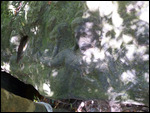
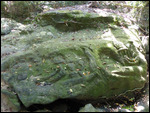
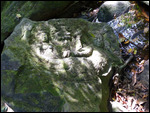
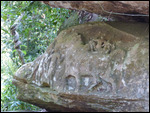
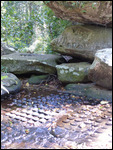
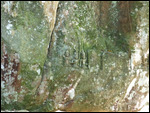
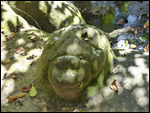

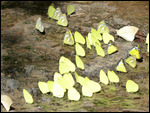
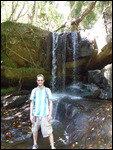
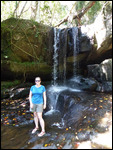
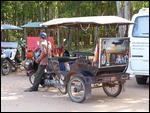
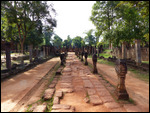
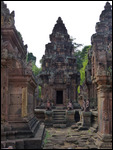
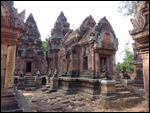
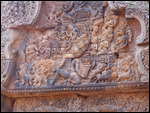

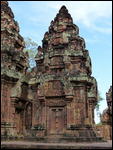
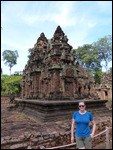
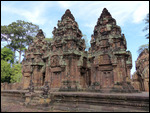
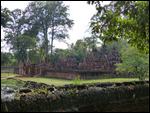
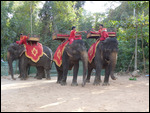
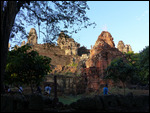
2025-05-23